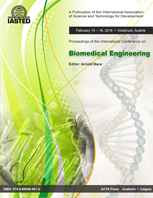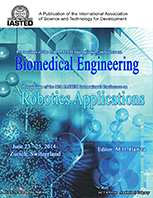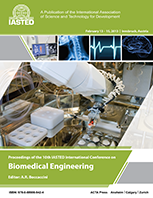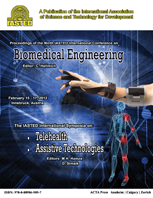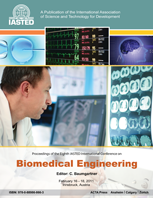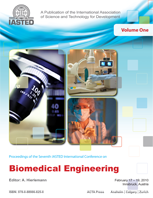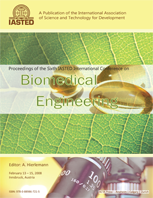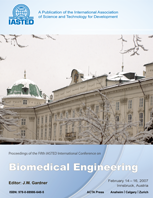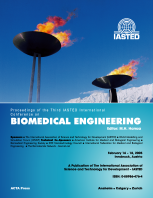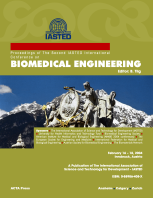The 10th IASTED International Conference on
Biomedical Engineering
BioMed 2013
February 13 – 15, 2013
Innsbruck, Austria
KEYNOTE SPEAKER
Biomaterials as a Platform for Regenerative Medicine
Abstract
In Tissue Engineering (TE) and Regenerative Medicine (RegMed) the three main components of translational strategies, namely biomaterials, biosignals and cells, can be used in various combinations. These range from a minimalist approach, in which molecular assembly of an injectable polymeric system exposes a bioactive signal in the regenerative niche, to a maximalist strategy, involving pre-seeding of autologous cells on to a biomaterial scaffold and in vitro growth under the action of growth factors, prior to implantation of the cellularized TE construct. Between these two limits there are numerous examples of varying degrees of complexity in different medical disciplines. This presentation will examine ways of using the biomaterials platform for regenerative strategies, and in doing so the contribution of the life sciences will be emphasized and especially that of co-culture models established in our laboratory during the past years [1]. In addition to unravelling the mechanisms of biomaterial-induced regulation of cell functions, we hoped to develop new therapeutic concepts for RegMed [2,3].Two microfibre scaffolds have been intensively studied, namely silk fibroin and a polymer blend of starch and poly (epsilon-caprolactone)(SPCL). In co-cultures of human dermal microvascular endothelial cells (HDMEC) and primary osteoblasts (pOB) on the 3D micromesh of silk fibroin an extensive network of capillary-like structures was formed in the absence of exogenous pro-angiogenic growth factors (VEGF, bFGF)[4]. A similar type of self-assembly occurs if outgrowth EC (OEC), derived from adult endothelial progenitor cells (EPC), are used as endothelial source [5]. This self-assembly process has also been demonstrated in vivo using biomaterial scaffolds pre-seeded with OEC and pOB and cultivated for 1 week on SPCL as described, followed by subcutaneous implantation in a nude mouse model for 2 weeks [6]. More detailed co-culture studies on SPCL showed that the osteoblasts provide the necessary pro-angiogenic growth factors (GFs). Moreover, in the co-culture setting EC upregulate synthesis and secretion of osteoblastic collagen I, which in turn promotes matrix-guided vasculogenesis [7]. These data clearly indicate that osteoblasts can act as highly efficient natural delivery systems for angiogenic signals on these polymer scaffolds, this having considerable relevance for vascularization strategies in TE.
More recently, similar co-cultures of osteoblasts and EC revealed that PCL incorporated into calcium-deficient hydroxyapatite also promoted microvessel-like structure formation [8]. In as yet unpublished studies the degree of complexity of the models has been increased by adding a further relevant cell type, characterized both by its ubiquity and biological reactivity, namely the macrophage phenotype. First studies indicate that macrophages can modify the angiogenic response in cocultures of osteoblasts and EC.
Supported by the EU Institute of Excellence, EXPERTISSUES, & the BMBF/DAAD German-Chinese Cooperation in Regenerative Medicine.
Biography of the Keynote Speaker
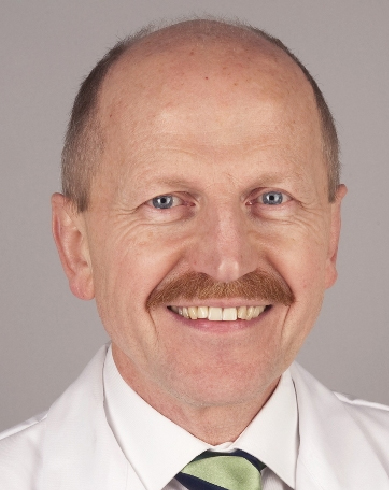
Prof. C. James Kirkpatrick has a triple doctorate in science and medicine (MD, PhD, DSc) from the Queen’s University of Belfast and since 1993 has been a Professor of Pathology and the Chairman of the Institute of Pathology at the Johannes Gutenberg University of Mainz, Germany. Previous appointments were in pathology at the University of Ulm, Manchester University and the RWTH Aachen. His principal research interests are in the field of biomaterials in tissue engineering and regenerative medicine, with special focus on the development of human cell culture techniques, including novel 3D coculture methodology on biomaterials. He is author/coauthor of more than 400 publications in peer-reviewed journals and has made more than 1100 presentations to scientific meetings worldwide. He is a former President of both the German Society for Biomaterials (2001-2005) and the European Society for Biomaterials (2002-2007; George Winter Award 2008), and is a current Associate Editor of the journal Biomaterials (since 2002). Since 2004 he has been a Honorary Professor at the Peking Union Medical School in Beijing and the Sichuan University in Chengdu, China. In 2010 he was awarded the Chapman Medal, Institute of Materials, Minerals & Mining, London, UK for "distinguished research in the field of biomedical materials".






